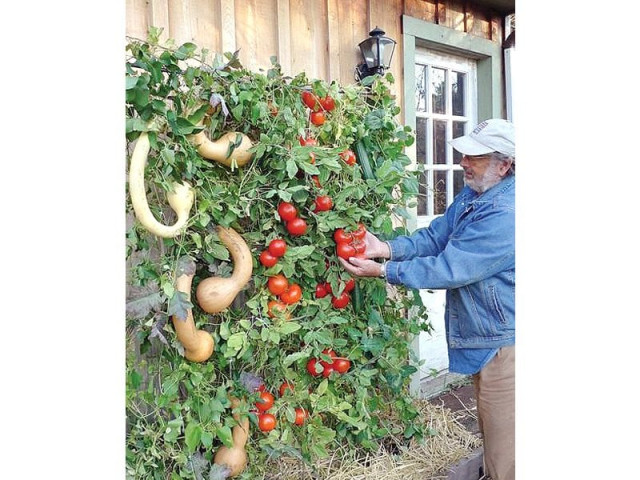Vertical vegetation: Hanging gardens
When pushed against a wall, grow a garden.

When pushed against a wall, grow a garden. PHOTO: EUNICE BAUERMEESTER
A green wall quite literally consists of a wall that is lined with a combination of soil and liquid fertiliser or nutrient-enriched water, to support plant life.
While complex vertical gardens need professional handling, for a smaller set-up one can purchase dirt panels embedded with upward-growing seeds, or a wrought iron trellis fixed with gardening pots.
Plants are watered using a hose, but if they are hung too high, an automatic gravity system can be attached to a hose that allows water to drip down channels at the back of the pockets or trays.
The space for a vertical garden should be wide enough and have adequate sun exposure to allow healthy plant growth. If edibles are planted in recycled containers, they should not have traces of toxicity. The more soil a container can hold, the bigger the plant it is able to support.
Methods of designing a vertical garden
Pockets

PHOTO: JESSICA HIBBARD ELENSTAR
Pouches made of breathable, recycled material are attached to a wall in rows with metallic screws. A standard pocket measuring 12x20 inches may hold approximately 20-22 pounds of soil and carry both flowers and vegetables.
Trays

PHOTO: EUNICE BAUERMEESTER
Trays are usually made of plastic or fibre and are attached at an angle using brackets. They are perforated at the base to allow drainage and aeration. Succulents with shallow roots are best-suited for plantation in trays that are 2x2 inches deep, while larger ones measuring 4x4 inch can hold perennials and edibles.
Pot hangers

PHOTO: SHELTERNESS.COM
Pot Hangers are clay, plastic or fibre pots that are clamped on to the wall using rust-resistant supports. Plastic bottles can also be used. The sizes of the pots may vary but using very big ones should be avoided, particularly those made of clay because they won’t withstand wind pressure. This method can be used to plant herbs, vegetables and flowers.
Tazeen Inam has worked in the electronic media and freelances for various publications.
Published in The Express Tribune, Sunday Magazine, May 18th, 2014.



















COMMENTS
Comments are moderated and generally will be posted if they are on-topic and not abusive.
For more information, please see our Comments FAQ